Virginia is one of the oldest states in the country, dating back to 1607 when it was just a colony. Tourists come from around the world to experience the lush beauty of the Shenandoah Valley or the bustling coastline, but do you know what Virginia’s largest park is?
If you take a moment to drive outside of Richmond for 20 miles, you’ll come face to face with an 8,000-acre park known as Pocahontas State Park. As the largest state park in Virginia, the opportunities are endless. Whether you want to go camping for a week or check out the fishing for the afternoon, the park has many large lakes to pass the time. Read on to learn a little more about the largest park in Virginia.
Chesterfield – The Home of Pocahontas State Park

Chesterfield is a city within Chesterfield County with less than 4,000 residents.
©John McAdorey/Shutterstock.com
To get to Pocahontas State Park, you must visit Chesterfield, south of Richmond. With over 315,000 people within Chesterfield County, it is one of the best communities for anyone who wants to raise a family and relax with nature. The average household income is $88,315 annually, with a median home price of $385,000.
After establishing the Jamestown Settlement in 1607, the English explorers found Henricus, just the start of Chesterfield County. Founded by Sir Thomas Dale, it eventually became a separate settlement from Henricus in 1749 to establish its court seat. Today, Chesterfield County includes a city named Chester, Midlothian, Moseley, and Richmond.
The History of Pocahontas State Park
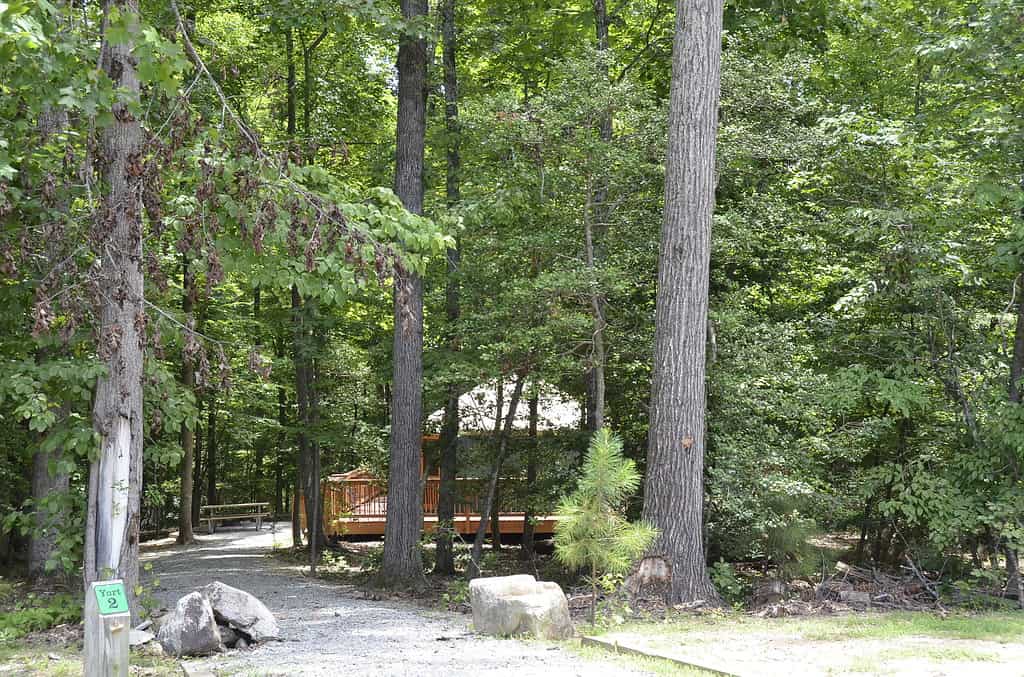
Pocahontas State Park was initially called the “Swift Creek Recreational Demonstration Area” until 1942.
©Virginia State Parks / CC BY 2.0 – License
The Civilian Conservation Corps (CCC) officially established the Pocahontas State Park in 1946, sitting it along Swift Creek. Initially, this area had been a recreational space operated by the National Park Service, though it had the most traffic during the World War. However, in 1946, they donated the space to Virginia State Parks. At the time of the donation, the space included 300 buildings with extensive roads and walking trails. It also had the 3 lakes within the property.
This park received its name as a tribute to Pocahontas, the daughter of the Powhatan Confederacy of the Algonquin Nation chief. Her actions to save Captain John Smith from the confederacy’s captivity are significant moments in Virginia’s state history, which is why it won the local contest to name the park. Though initially named the Pocahontas Memorial State Park, officials shorted it to Pocahontas State Park.
Nowadays, Virginia’s Department of Conservation and Recreation operates the park. To help locals learn about the history of Pocahontas State Park, they host many events throughout the year for visitors. While guided nature hikes give you an in-depth look at the site, registration is available for family and children’s programs to attend. The CCC Museum is also open to visitors to learn more about the parks and Virginia’s history.
Tourism and Recreational Activities At the Largest Virginia Park
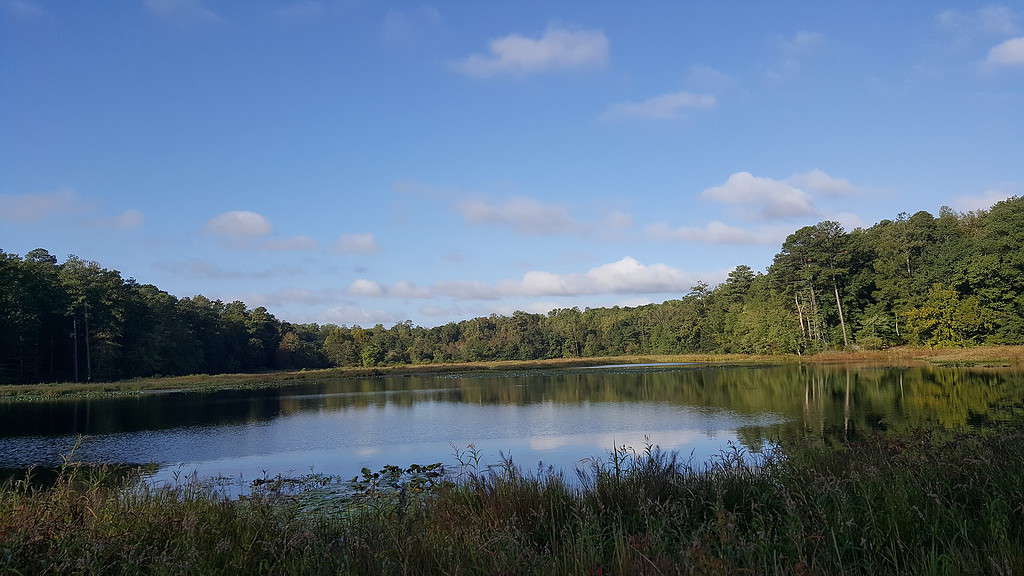
Swimming is prohibited at this state park, but the local office rents many boating options for other water-based activities.
©Virginia State Parks / CC BY 2.0 – License
As you arrive at Pocahontas State Park, you have seemingly endless possibilities for how to spend the day. The organization of trails allows ample paths for walking (6.6 miles), biking (33.1 miles), and multi-use activities (46.5 miles). Deciding where to start is the only tricky part.
Hiking is one of the top ways locals and tourists explore the area. With a map of the 58 miles of hiking trails, you get to enjoy the extravagance of the forest while using marked paths to avoid getting lost. Swift Creek Lake is one of the best stopping points along any of these trails to launch a kayak or canoe, experiencing Virginia in another mode of transportation. Even small children can safely take part in the fun of the park with the splash pad, playground, and pool at the Aquatic Center. This facility is the only place to swim at the park because the lakes are not meant for swimming.
If one day isn’t enough, camping is also an option. While the rest of the park closes at dusk, registering with the office to go camping lets you see Pocahontas State Park in a way that the daytime doesn’t allow. There’s also an outdoor amphitheater and a local museum where you can learn more about the park’s history when you visit.
Wildlife In Pocahontas State Park
One of the reasons that so many people visit the state parks in Virginia is the immersion in the deciduous forests. These forests also cover most of the Pocahontas State Park, but the widespread wetlands and lakes provide the perfect home for local wildlife.
Wild Turkey
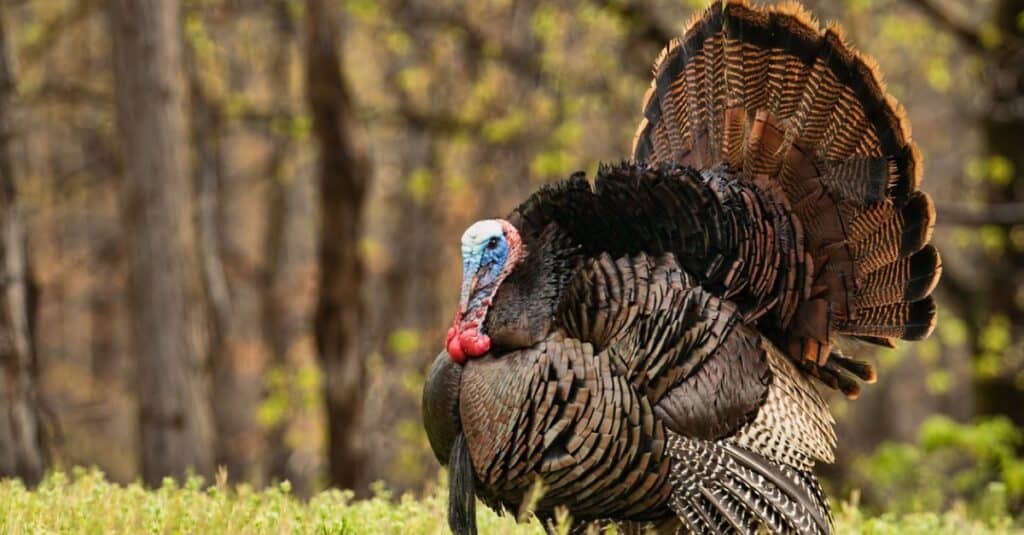
There are about 180,000 wild turkeys in Virginia.
©iStock.com/Jens_Lambert_Photography
The wild turkey, sometimes called the eastern turkey, is one of the most abundant birds in the state. They have an omnivorous diet and are the largest game bird on the continent. They run up to 25 miles per hour, but their hefty body only allows them to fly short distances.
When Virginia was first established, settlers used wild turkeys and other game animals as their main food source. As settlers cleared away forests to collect lumber, the natural habitat faded as the state lost over 60% of the turkey population. The wild turkey population reached its worst numbers at the start of the 20th century, but efforts to reintroduce it have been successful.
White-Tailed Deer
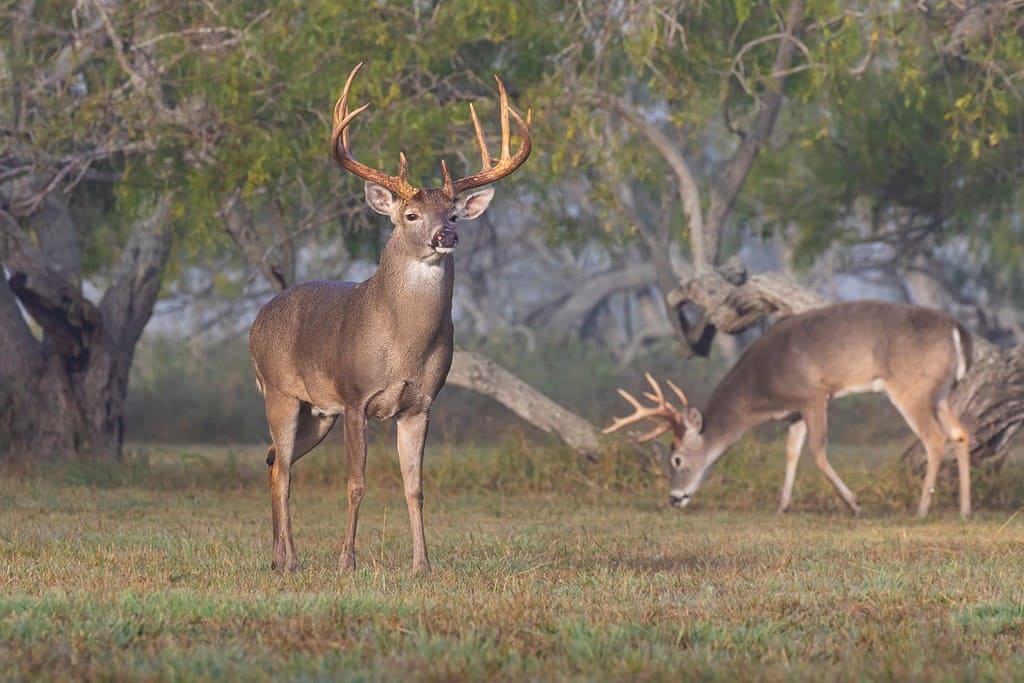
The white-tailed deer is one of Virginia’s most common mammals, with 1 million spread across the state.
©Danita Delimont/Shutterstock.com
No matter where you walk in Pocahontas State Park, you will probably get a glimpse of the white-tailed deer. While the warmer months bring a reddish hue to their coat, the same undertone becomes greyish brown by the fall. They aren’t aggressive if you keep your distance and observe one of Virginia’s longtime mammals. While they normally flee at the sign of trouble, any threat to a doe’s young puts you face to face with a very angry animal.
Like the wild turkey, white-tailed deer suffered a major drop in population in the early 1900s, even though their history goes back further than the Ice Age. Virginia allows residents to hunt to keep the population from getting too high, but the Virginia Deer Management Program has several restrictions.
Owls

Three main owl species call Virginia their home – the
barred owl
(above), the eastern screech owl, and the great horned owl.
©FotoRequest/Shutterstock.com
One of the nighttime visitors of Pocahontas State Park is the owl. The state has a few different owls, but they mostly stay hidden at the park. If you decide to go camping, you’ll most notice the gentle and hollow “hoot” when they are near.
Owls can become aggressive, so do not approach one. Respecting the distance between yourself and this wildlife keeps you from risking an attack. Leave any undisturbed owl nests and other nests to keep a comfortable balance between humans and local birds.
Great Blue Herons
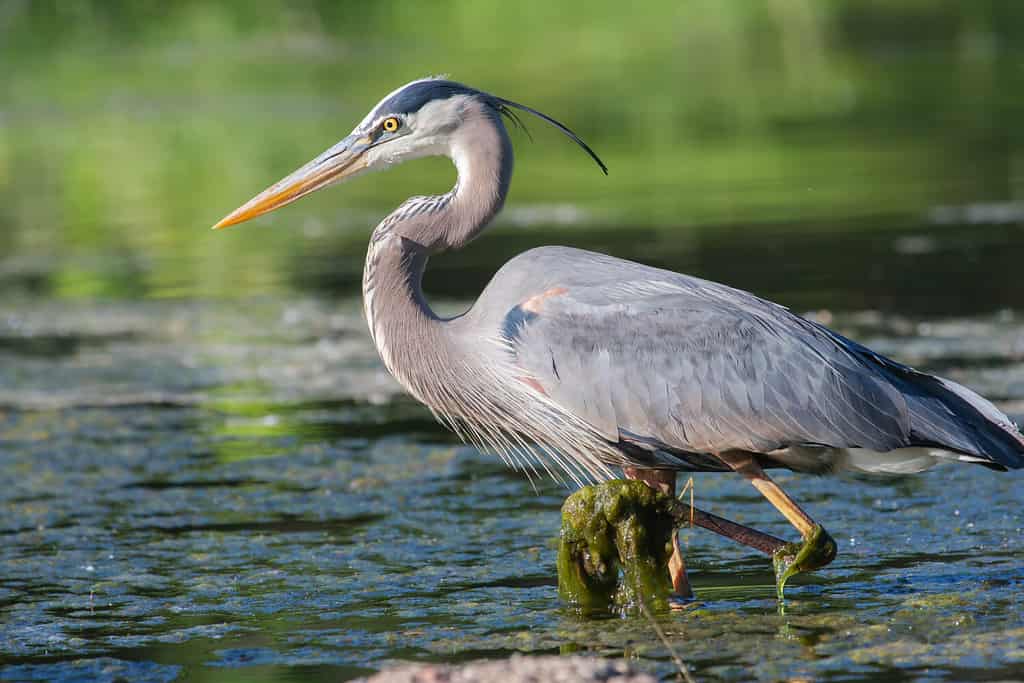
If you walk by one of the lakes, you might spot a great blue heron looking for a meal.
©Joseph Scott Photography/Shutterstock.com
Great blue herons prefer to live near areas with water, which is why Pocahontas State Park welcomes so many of them. They tend to stay near the wetlands, rivers, and lakes, starkly contrasting their white, grey, and blue bodies against the green grass and trees. It is the most popular heron species in Virginia, though you can also find them in abundance in the Chesapeake Bay area.
Woodpeckers
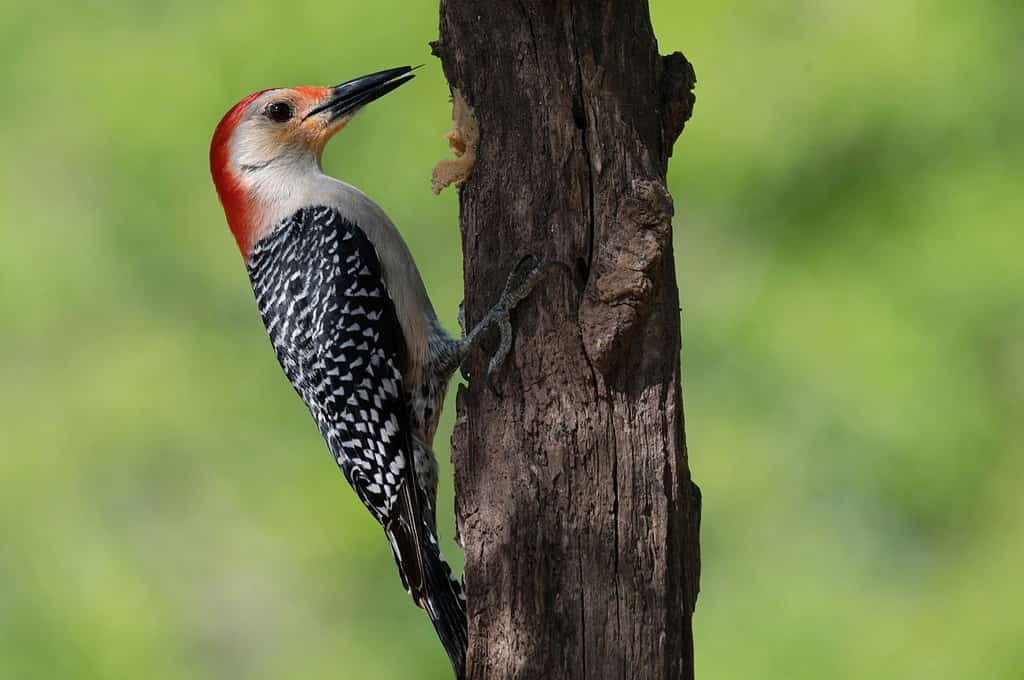
Woodpeckers pose a limited threat to humans, but they cause problems for homes and other structures.
©Connie Moore/Shutterstock.com
With an affinity for wooded habitats, the park’s thick forest provides the perfect home for many woodpeckers. This bird looks for insects in the trunks of trees, creating holes in the surface to get to their prey. Though they primarily eat insects, they sometimes eat opportunistically when they come across fruit, eggs, tree sap, or other small animals in their search.
Pocahontas State Park offers plentiful birdwatching opportunities, but you don’t need to look far for the woodpecker. There are 5 main species at the park, which include the red-headed, red-bellied, downy, hairy, and pileated woodpeckers. Despite their reputation for causing significant damage, the Federal Migratory Bird Treaty Act protects them.
Insects At Pocahontas State Park
With its humid climate, Pocahontas State Park is also home to many insects. While some are harmful, others are beautiful to take in from afar. Here are a few of the common insects in the park.
Dragonflies

If you take a walk down to Beaver Lake, you have the chance to see a broad array of multicolored dragonflies.
©Hector Ruiz Villar/Shutterstock.com
The abundant wetlands of the Pocahontas State Park attract many dragonflies. As a predatory insect, they eat other bugs in the area, but they aren’t a threat to humans. They generally don’t bite but will defend themselves if you try to catch one. They can’t sting, but their small teeth can bite you if you hold them.
Damselflies

Damselflies prefer freshwater habitats, and this state park has many bodies of water.
©Gurcharan Singh/Shutterstock.com
The damselfly is abundant in Virginia, but most people don’t realize they’ve seen this insect so many times. Sometimes mistaken for a dragonfly, this insect is much thinner and slender, resembling a twig. They prefer to live near water; the largest one had a 72-centimeter wingspan. They eat nearly any flying insect, making them the ideal predator against the next insect on this list.
Mosquitos
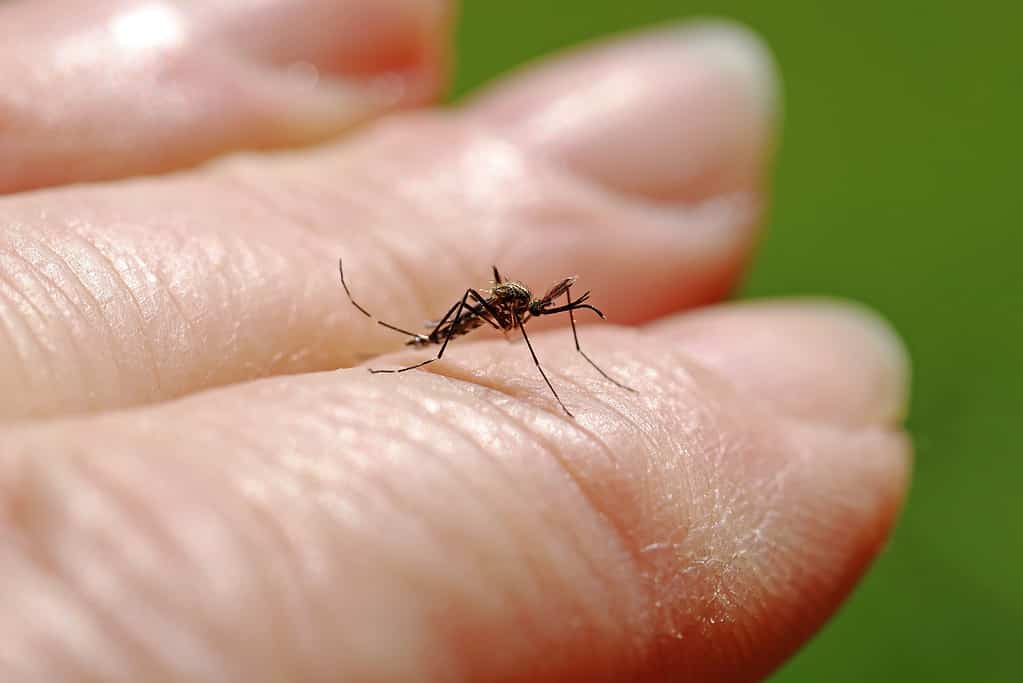
Mosquitos spread many diseases, including malaria and yellow fever.
©Astrid860/ via Getty Images
While the dragonfly and damselfly mostly leave humans alone, the mosquito is the most frustrating insect you encounter at this Virginia state park. Mosquitos love any humid and wet environment, making this park (and the rest of the state) an ideal home. The biggest surge in the mosquito population happens in April every year, but they stick around through September and October until the cold weather begins.
Is Pocahontas State Park Safe?
Local park services allow locals to enjoy recreational activities like fishing and camping. The park officially opens at 7:00 am, but the various facilities are open at varying times. Unfortunately, the lakes aren’t safe to swim in, so local authorities prohibit it.
Besides this small restriction, the Pocahontas State Park is safe and family-friendly. Activities are available for all ages, and the Visitor Center has additional supplies for anything you forget.
Getting To Pocahontas State Park
If you want to get to this park, you must drive out of Richmond, heading towards Chesterfield. The official website for Pocahontas State Park recommends using Interstate 95, Route 288, and Route 360 for the most direct route to the area. If you drive from the coast in Norfolk or Virginia Beach, the drive takes about 2 hours. Driving to the park from Roanoke takes a little longer (3 hours). The park officially opens at 7:00 am, but the various facilities available open at varying times.
The photo featured at the top of this post is © bobistraveling / CC BY 2.0 – License / Original
Thank you for reading! Have some feedback for us? Contact the AZ Animals editorial team.






